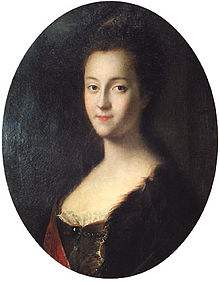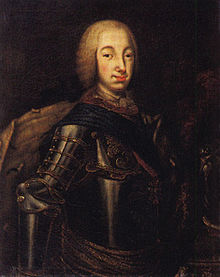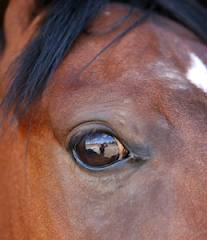This essay is part of a series applying the principles outlined in Malcolm Gladwell’s essay collections. The Tipping Point examines the mysterious emergence of “social epidemics,” ranging from crime waves to fashion trends. As noted in the introduction, “Ideas and products and messages and behaviors spread just like viruses do.” The following discussion applies the social epidemic principles to the persistent rumor (at least one would hope) that Russian Empress, Catherine the Great, had sex with horses.
I first heard this rumor in 1971, as a newly arrived freshman from an all girls’ high school. I stood timidly in my college cafeteria wondering where I might sit among this melee of strangers and further wondering where I might fit into this Southern California college.
****
The dark wood paneling of the enormous dining hall extends up to the vaulted ceiling. Students’ voices echo excitedly as they greet each other and sit in clumps of roommates, classmates, teammates, fraternities or sororities. I draw in my breath and sit at a random table of five, nerve-wracking enough, but better than forlornly sitting by myself hoping that someone might like the look of me and join me. The three guys are all vintage 1970 college students with long unkempt hair, white T-shirts and faded and patched blue jeans. I am pleased to see that I blend well with the two other girls at the table, wearing low hip hugger jeans, a thick leather belt with a huge brass buckle that pinches when I lean over, well-tended long hair, and an embroidered Mexican wedding shirt.
The five students glance at me quickly and continue talking. One of the guys says, “Hey, did you hear about Catherine the Great?” I have a vague awareness of the Russian Empress but know nothing specific. “Did you know that she used to have sex with horses?”
Another guy chips in, “She died when a horse crushed her.”
The sexual content of this conversation is uncharted territory. What am I supposed to do with this information? How can I add to this discussion? Is this what college is going to be like?
Thankfully, it turns out that Catherine the Great’s sex life is a conversation killer. Perhaps we all take a few seconds to privately contemplate the provocative logistics of the scenario, but the conversation promptly moves on to something as mundane as the poor quality of cafeteria food. I never speak of this again, merely snug the nugget in the back of my mind.
******
Forty years later, I was reading a book titled Paris in Love, a collection of diary entries by the romance novelist Eloisa James, who wrote about the cultural challenges for her family during a sabbatical year in Paris in 2009. In the midst of very homey entries, she notices her husband is reading a biography of Catherine the Great, and comments, “His book also didn’t seem like much fun, especially after I inquired about the one thing that I knew about Catherine – to wit, her purported erotic encounters with equines.”
I was stunned. What I had heard at the cafeteria was not a local rumor concocted by a bored student in a Russian history class, but a rumor that had been circulating internationally for a good 250 years. I then casually asked my husband Nick what he knew about Catherine the Great, and Boom! there it was again. When I discretely questioned my peers a good fifty percent knew all about Mr. Ed. And just as it was in the college cafeteria, once you drop the horse bomb, you have to move on to something else. Coincidentally, I had just finished reading Malcolm Gladwell’s The Tipping Point. Applying Gladwell’s principles on rumor propagation to Catherine the Great emerged as an interesting exercise.
Gladwell points out that rumors address a number of social needs, including confronting fears or trying to make sense out of a confusing situation. Workplace rumors about rightsizing, downsizing or total collapse fall into this category. These types of rumor may be based on a misinterpretation or embellishment of facts. And then there are rumors that are based on deliberate misinformation, perhaps from a disgruntled employee, a romantic or political rival or jealous competitor. In the case of Catherine the Great, let’s hope we’re dealing with deliberate misinformation, but then from who? There was no shortage of political rivals – Polish nobility, for example, many of whom were understandably disenchanted as Catherine slowly divvied up their country. However, I think that a romantic rival is the best bet for the initial propagator.
Step One: Rumor Initiation
Catherine, a minor German princess, was plucked from obscurity at age 14 to marry Grand Duke Peter, the grandson of Peter the Great and heir to the throne. Upon arrival in Russia, she was immediately repulsed by her fiancé, whose genetic ugliness was further accentuated by a recent bout of small pox.
According to Catherine’s sympathetic biographer, Robert Massie, the wedding was certainly loveless and possibly never consummated. Grand Duke Peter then took a mistress, Elizaveta Vorontsova, promising that she would become empress after he divorced Catherine. However, Peter’s drunken, abusive and childish behavior – he loved to play with toy soldiers marching across his bed – alienated the nobility. He was forced to abdicate, and shortly after that he was murdered, though Massie states that it is unclear whether Catherine specifically ordered the killing. Mistress Elizaveta subsequently married a mere colonel, and spent the next 30 years of her life in bitterness and ill health.
Downsized Elizaveta gets my vote for the romantic rival starting the rumor.
Step Two: The Law of the Few
Gladwell outlines three basic components of propagation – the law of the few, the power of context, and the stickiness factor. The law of the few describes how a rumor travels. The context and stickiness describe the content of the rumor, how believable it is.
Gladwell identifies three categories of the “few,” i.e., mavens, connectors and salesmen. Mavens are information brokers, who have their ear to the ground for all the latest trends and gossip. The information is then passed to a connector, who is one of those people who seems to know everybody through multiple different walks of life. Salesmen are the persuaders, the type of charismatic people that the average person just wants to believe. In this digital age mavens, connectors and salesmen can be collectively categorized as “influencers.”
In Catherine the Great’s vast court, it is easy to imagine that political intrigue and multiple agendas could produce a percolating network willing to spread a rumor to sabotage the interloping Empress.
Step Three: The Power of Context
While Catherine the Great’s rumor might have gone viral within the Russian court, there must have been something about it that prompted the rumor to spread beyond the court, beyond Russia itself, making the leap to Western Europe and beyond. Here is where the power of context comes in. According to Gladwell, context is “sensitive to the conditions and circumstances of the times and places in which they occur.” Basically, our environment primes us to accept or reject a rumor. As much as Catherine tried to modernize Russia along the model of Western Europe, her country was still the menacing and mysterious country right across the border.
Catherine wanted Russia to be considered among the enlightened European countries, but she couldn’t overcome the barriers of culture and geography. The “otherness” of Russia and the fear it inspired created a receptive environment for the rumor.
Europe was primed and ready to believe the worst about Catherine.
Step Four: Durabilty of Context
Gladwell notes that rumors tend to be ephemeral, petering out after the truth is revealed, or the context changes or people just lose interest. However, the 250 year duration of rumor might set a record, perhaps because the context has not changed. Russia is still the feared country. When I first heard the story in 1971, Russia was the unpredictable giant, a vodka-soaked country, speaking a mysterious guttural and spitty language that has a chronic shortage of vowels and oversupply of “v’s.” It was the brutish and boorish country of Stalin, followed by Nikita Khrushchev, who distinguished himself by taking his shoe off at a UN meeting and banging it on the table to make a point. Now we are treated to visions of a shirtless Putin riding a horse. The context persists.
As a country, we are still ready to believe anything about those crazy Ruskies.
Step Five: Stickiness Factor
Stickiness refers to how the original rumor may be modified and embellished to make it more memorable. The starting point of the rumor might have been a mean-spirited comment by mistress Elizaveta saying something along the lines of, “That Catherine, she’s in love with horses, she has a whole stable of them, never rides side saddle like all ladies should, and have you noticed that all of her favorites come from the army’s Horse Guards, plus she kind of looks like a horse. I’m surprised she doesn’t whinny at night, if you know what I mean.” At this early stage, the comment still contains a kernel of truth. Catherine had a consuming love for horses. This fact is not disputed.
In the next step, the rumor is “leveled” by deleting all the details for understanding the true meaning of the story – basically the bitter musing of a deposed mistress – and then exaggerating other details to add some juice, i.e. sex. Gladwell notes that distortion of facts is universal in the spread of rumors.
Horses scare me, but I recognize they can prompt intense emotional attachments among their owners. Yes, horses can be beautiful. And compelling. And provocative. Now I envision it. It was those dark eyes and shimmering muscles that sharpened the rumor to its salacious level while still retaining a tiny kernel of believability. The horse is the perfect animal. No other barnyard animal could have sustained the rumor across continents and centuries. The stickiness is not about Catherine or her romantic or political rivals.
The stickiness, the believability, is all about the horse, of course.
Follow Liza Blue on:Share:




What an interesting way to explain how rumours spread. I had heard of Catherine’s ‘disposition’ towards horses.
Thanks for an illuminating read.
Richard.